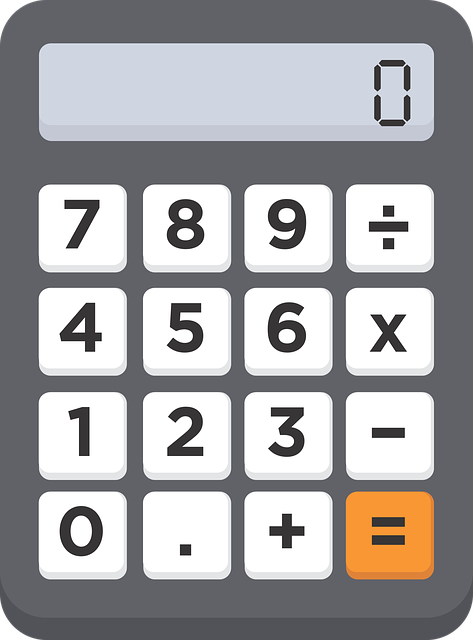What is Days Sales Outstanding (DSO)?
Days Sales Outstanding (DSO) is an accounting metric that tracks the average number of days sales remain in accounts receivable waiting for collection. When a company provides goods or services to a customer with the understanding that they will pay later, it’s called selling on credit or a credit sale.
Credit sales are added to a company’s accounts receivable. DSO, also called days receivables or average collection period tells you how long your sales get held up in receivables before you collect on the payment.
Why is Days Sales Outstanding important?
Companies measure DSO because it’s a key performance indicator of a company’s effectiveness in collecting payment. It also reveals some crucial information about your customers who purchase on credit.
Knowing your DSO is crucial because it directly impacts your company’s cash flow. A lower DSO means you’re converting static assets into cash flow quickly, while a higher DSO means it’s taking longer to liquidate accounts receivable into cash flow.
On-time or early payments indicate customer satisfaction. Late payments and bad credit receivables indicate either a lack of customer satisfaction or that your sales team is extending credit to customers who aren’t creditworthy.
DSO also provides insight into the performance of your collections team, especially when you monitor it over time. If your DSO keeps going up from month to month or quarter to quarter, there is an issue with collections. DSO is a component of the cash conversion cycle.
How do you calculate Days Sales Outstanding?
Before calculating Days Sales Outstanding (DSO), you need to decide which length of time you want to review. The accounting period or accounting term is a crucial part of the equation.
Most companies review their DSO by the month, quarter, or year. Once you decide which accounting term to use, you can apply the other parts of the formula.
DSO Formula
You need the number of days in the accounting term, average accounts receivable balance, and total credit sales during the term for DSO calculation.
The formula to calculate DSO is:
(Current accounts receivable balance ÷ total net credit sales revenue during the accounting term) x number of days in the accounting term = DSO
Let’s look at an example.
DSO Example
The ABC Construction Company is calculating their Days Sales Outstanding for the quarter. Their current A/R balance is $75,000. During the quarter, the company invoiced $95,000. There were 91 days in the quarter.
ABC Construction would use this equation for Days Sales Outstanding calculation:
($75,000 ÷ $125,000) x 91 = 51.6
The company’s Days Sales Outstanding is 51.6, which represents the average number of days receivables remain outstanding.
Frequently Asked Questions
Here are some of the most common questions about Days Sales Outstanding.
What is a good Days Sales Outstanding?
Generally, a DSO of 45 days or fewer is considered good, but it changes significantly from industry to industry. Certain sectors are more prone to more extended repayment periods than others.
The best way to evaluate your DSO performance is to establish a benchmark based on the average DSO for your industry and companies with similar business models and payment terms. DSO is best utilized as a comparison.
You should also track your DSO from one accounting period to the next and compare the differences. You want to look for trends and changes to understand how your company’s effectiveness in collections changes over time.
DSO for Seasonal Businesses
One thing to remember is that DSO can change significantly for companies affected by seasonality. For example, a lawn care company might perform most of its work during the spring through fall, but the customer might not pay their invoices until the fall or winter months. In these cases, the spring and summer DSO will be significantly higher than the fall and winter DSO, but that’s an expected trend for that particular industry.
Do cash sales count towards Days Sales Outstanding?
No, you shouldn’t include cash sales in your DSO calculations. Cash sales refer to when a company receives payment upfront for goods and services.
Any cash sale has a DSO of zero. You don’t want to include these figures because the purpose of DSO is to track your company’s ability to collect credit sales.
If you include cash sales in your DSO, the resulting figure is much lower than the actual average it takes to collect payment on an invoice. You won’t get reliable results or be able to derive any actionable insights from the metric.
What are the limitations to Days Sales Outstanding?
While DSO provides particular insights into your ability to collect money from unpaid invoices, it is not a perfect metric. Like all business metrics, you shouldn’t rely on DSO alone but rather include it as one of the metrics when taking a holistic approach to your company’s finances.
DSO tracks how long invoices stay in A/R before payment is collected. It is not a measure of the average time to receive full payment from your customers.
DSO is not helpful when comparing companies in different industries or those with different sales structures. A predominantly cash sales company’s DSO is not as important as it is for companies that mainly process credit sales.
You can look at your company’s average time to collect cash on invoices with your DSO, but it’s not an all-purpose metric for analyzing accounts receivable efficiency. Fluctuations in sales from one accounting period to the next will drastically alter your DSO.
What can cause a high Days Sales Outstanding?
Several factors could contribute to a high DSO.
Customer Dissatisfaction
If customers are taking longer to pay you – or not paying – it could indicate that they are not as satisfied with your product and services. If you notice your DSO trending higher, look into satisfaction rates.
Extending Credit When You Shouldn’t
It’s an unfortunate reality that some customers are not as creditworthy as others. If late payments, and bad credit invoices, in particular, are impacting your DSO, your sales team might be offering credit to customers that can’t or won’t pay.
Inefficient Accounts Receivable Process
Some studies indicate a manual A/R process results in longer collection times than an automated process. Whether you use a manual or automated process, you must ensure your collections follow up on unpaid invoices efficiently.
How can my business decrease Days Sales Outstanding?
There are several strategies you can try to lower your DSO. However, before deciding what actions work best, you must determine the root causes of a higher DSO.
Early Payment Discounts
One way to encourage customers to pay invoices earlier is to offer a discount. While losing some revenue, the discount is a risk; it might be worth it if it means turning inactive A/R accounts into revenue that you can reinvest in your business.
More Payment Options
Giving your customers more ways to pay helps with collections. You can make payments available by credit card, ACH bank transfers, and online payments. Some businesses even accept newer online payments like CashApp and PayPal for business.
Invest in Automation
An automated A/R process can help track invoices, keep ahead of the aging schedule, and track your A/R turnover ratio. Some accounts receivable automation programs include automated invoice programs or integration with an automated invoice system. Either way, automating your invoices keeps customers informed of what they owe and can automate payment reminders.
Days Sales Outstanding – Final Thoughts
Knowing and tracking your Days Sales Outstanding helps you determine how efficient your company is at turning invoices into revenue. DSO impacts you predict cash flow and identify opportunities to improve collections.
It costs your business to let invoices go a long time without payment. Think of it like unsold inventory sitting on a shelf. You already paid for the expense but didn’t have the revenue from it – and that’s a problem since cash is the lifeblood of any business.
The longer it takes to collect, the more the cost impacts your business. You still must pay your bills, cover expenses, etc., all while you don’t have cash coming into the business. Decreasing your DSO helps reduce the costs associated with letting invoices go unpaid for an extended period.
If your business is struggling with cash flow due to unpaid invoices, you can also look into receivables factoring, also called invoice factoring.
Factoring invoices is essentially selling them to a third-party factoring company. You get the turn your accounts receivable assets into immediate working capital and pay the factoring company a percentage of the invoices when customers pay what’s owed.
To learn more about factoring invoices, visit our receivables factoring page or contact us to speak to one of our small business financing experts.

















